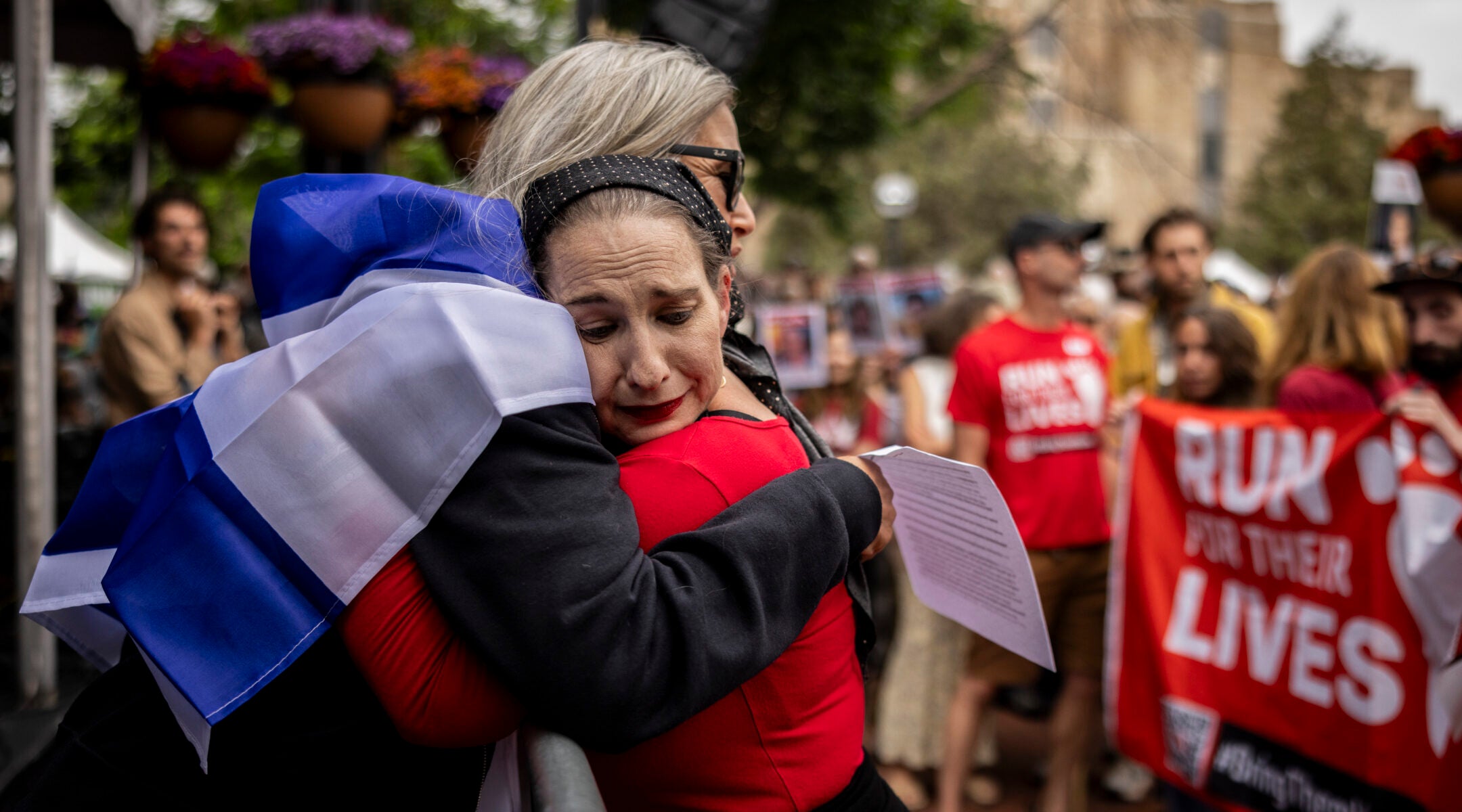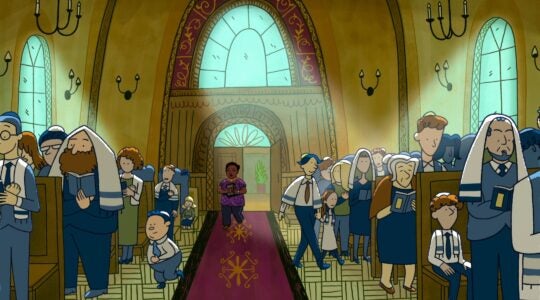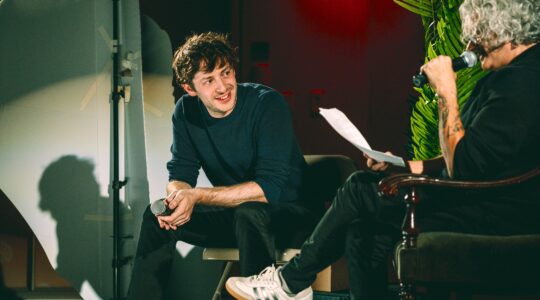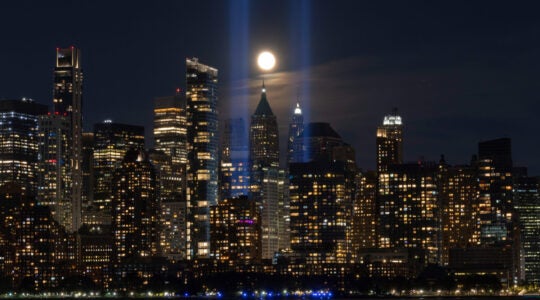BOULDER, Colorado — I noticed the overcast sky immediately but didn’t see the drones above my head until they were mentioned by someone else. Drones were hovering between Star Wars-style speeder-bike moves and others were tethered to rooftops and high enough to capture the full expanse of a college town nestled into the edge of the Flatiron Mountain Range.
My attention now shifted to the military snipers with precision shooters balanced on tripods above the pastry-lace trim of Boulder’s historic buildings. I wondered how many there were. It looked like someone had placed clusters of toy plastic soldiers along an expanse too wide for my field of vision to take in. At 5 foot 2 inches, I had no way to tell where the crowd began and ended.
It was Sunday, one week after a man firebombed Boulder’s Run for Their Lives group, and my chapter of the Israeli-hostage solidarity movement in Denver was joining the Boulder team’s 18-minute walk down Pearl Street for the first time.
The average Denver weekly turnout ranges between 30 and 40. I was told that before the attack, the weekly Boulder walk hovered between 25 and 30 participants.
Yes, there is a participation uptick when new hostage deaths are verified or a hostage return negotiation attempt actually results in a homecoming. But I was shocked by the crowd that turned out on Sunday.
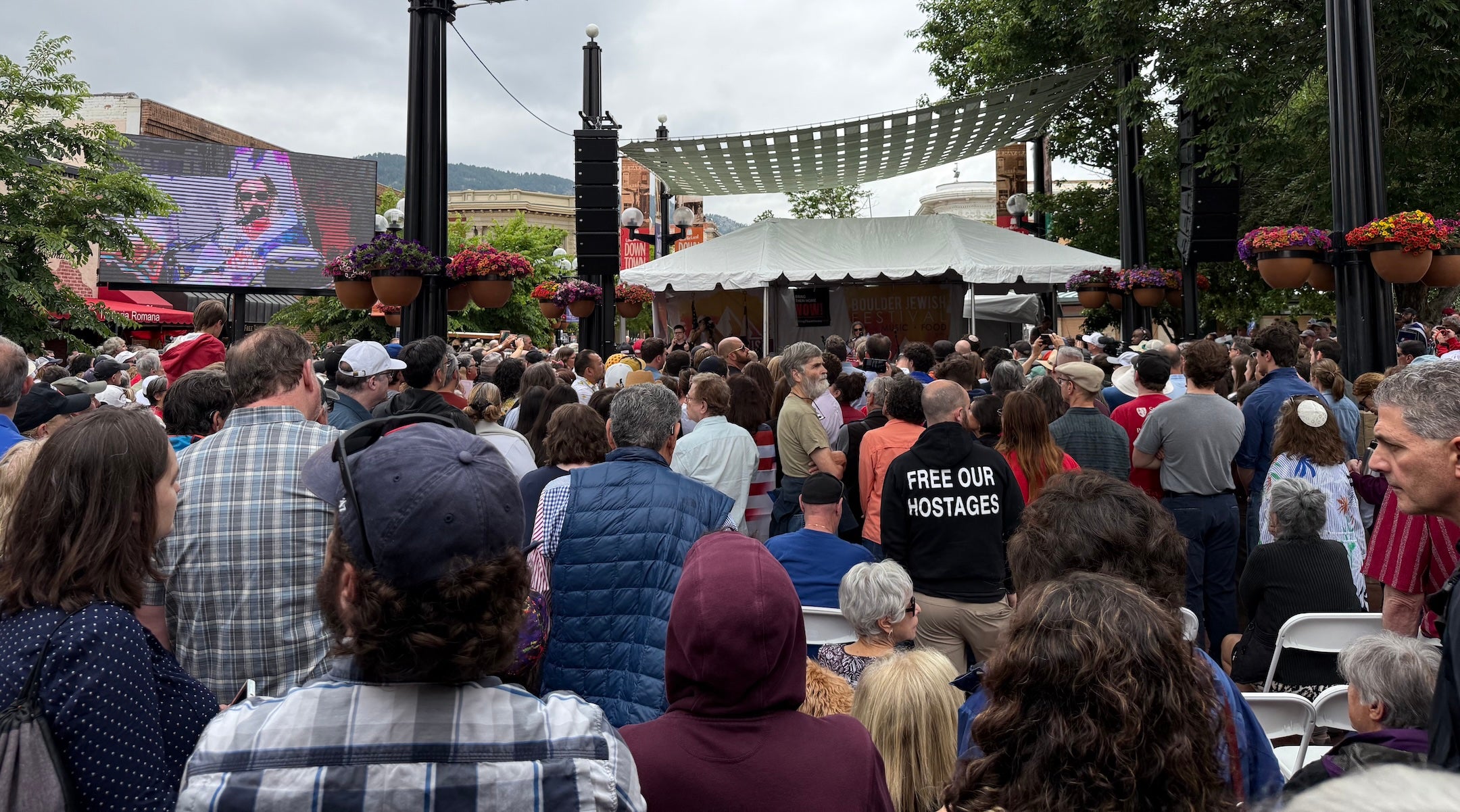
The crowd for Run for Their Lives and the Boulder Jewish Festival was large on June 8, the first Sunday after the walk was firebombed by a man who said he was protesting Israel. (Courtesy JewishColorado)
Anticipating maybe a few hundred participants at best, I was astonished when Run for Their Lives Denver’s co-leader and StandWithUs Colorado director Miri Kornfeld told me she thought there were more than 5,000 people present. Would they even know what Run For Their Lives was if a terrorist hadn’t set the participants of the previous week’s Boulder walk on fire with Molotov cocktails?
On hand was Colorado’s attorney general, Phil Weiser; Sens. Michael Bennet and John Hickenlooper and Representative Joe Neguse all walking with us, in solidarity. I also met several non Jewish allies at the walk and my phone buzzed with a supportive check-in from a non-Jewish friend on the way to Boulder.
This was the support all of us needed to sustain our ongoing effort to advocate for the hostages’ immediate release.
The scene played out in other cities, too. In New York, several hundred people turned out for a rally in Central Park whose weekly attendance had dwindled. Other places restarted their Run For Their Lives after a hiatus.
The large crowds were heartening. But I also could detect the tensions that fueled the attack in the first place, spotting a quartet of masked, keffiyeh-clad counter-demonstrators holding Palestinian flags at a prominent corner crosswalk.
Later, I saw a short video showing two of those counter-demonstrators hurling the phrase “anti-Zionism is not anti-semitism” at a bar-mitzvah age kid wearing a kippah. Parents and security, on hand if needed, watched as the kid tried to explain how deeply he cared about the children in Gaza to the masked protesters who declared his feelings irrelevant because his group was marching with an Israeli flag. The child struggled to explain that their militant rhetoric had ramifications for his personal safety; the adults told the counter-demonstrators to go away.
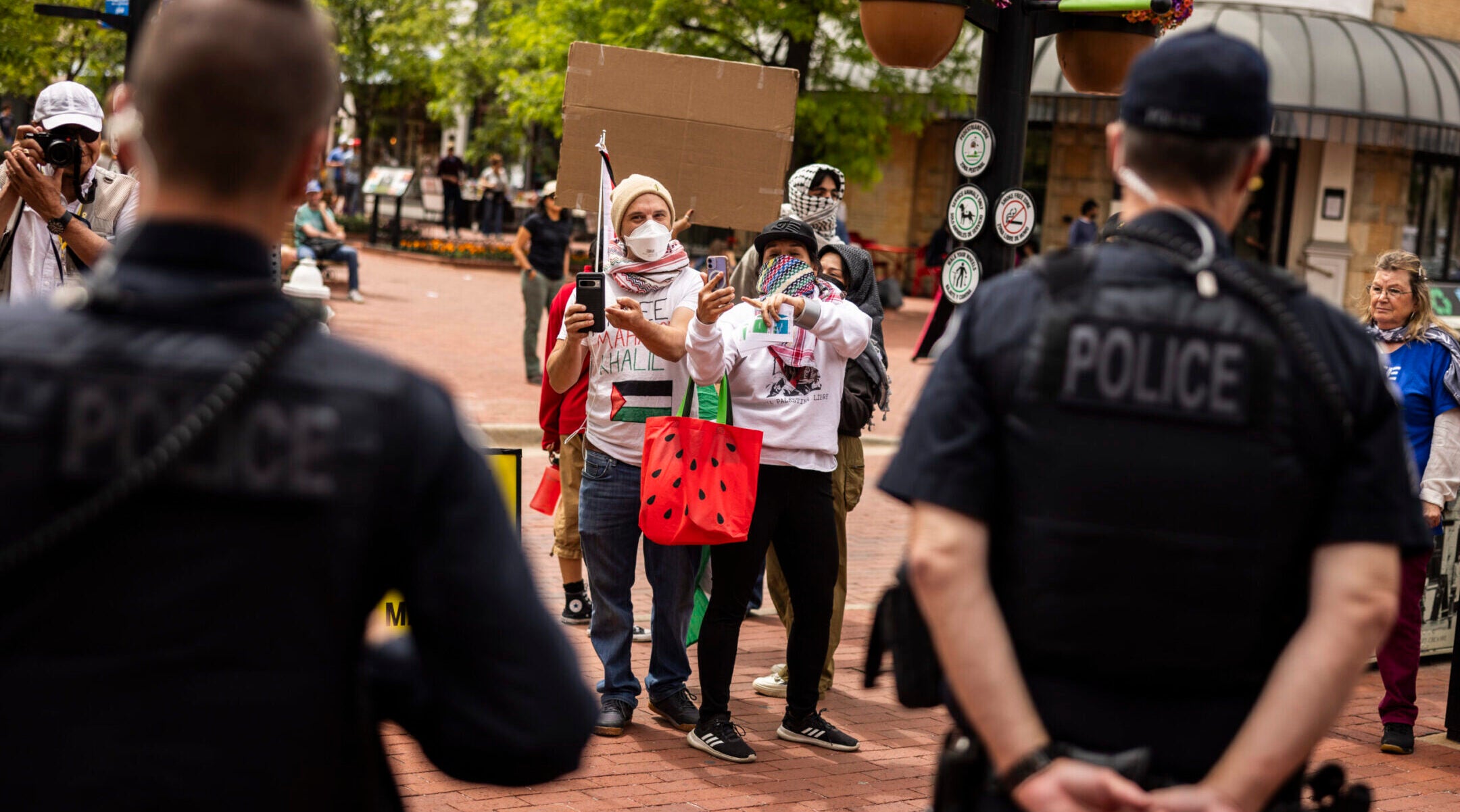
Pro-Palestinian protesters demonstrate during the Boulder Jewish Festival on June 8, 2025 in Boulder, Colorado. (Chet Strange/Getty Images)
As someone who is Ashkenazi and secular I enjoy a privilege in that I can always opt to conceal my Star of David and Bring Them Home dog tag in environments that feel uncomfortable or unsafe. Participating in Run For Their Lives means forgoing this privilege once a week so I can continue to advocate for the safe and immediate return of all the hostages.
During the weeks leading up to the attack I was noticing anti-Jewish tension metastasizing in increasingly palpable ways. I realized that the walks are now serving as a kind of temperature gauge for what life for non-passing Jews is like in my local community.
Things have changed recently. A couple of weeks ago in Denver’s Washington Park, an expletive-bracketed “Free Palestine” was hurled at me. During the weeks preceding the attack, the Boulder group was noticing similar patterns.
After the deadly attack outside the Capital Jewish Museum in Washington, D.C., the Denver group crowdfunded a private security guard and now the Boulder group, with the support of other local Jewish organizations, is running a crowdfunding campaign to support the victims of the firebombing attack and ensure future walks will have adequate security protection.
The snipers on the roof, and the supporters in the streets, showed me that, at least for now, the those who want Jews to be able to demonstrate safely on behalf of the hostages outnumber those who want to make us feel unsafe.
But I found myself worrying about the future. What will the larger community support look like next week and the week after that and the week after? In Boulder, Sunday’s large turnout was also helped by the fact that a major Jewish cultural festival happened to be taking place that day. Will non-Jewish allies even consider showing up for walks that are not punctuated by music, make-your-own snow cone machines, the opportunity to smell candles made in Safed, a pastrami food truck and sold-out challah vendor tents? In a few days, we will see.
JTA has documented Jewish history in real-time for over a century. Keep our journalism strong by joining us in supporting independent, award-winning reporting.

